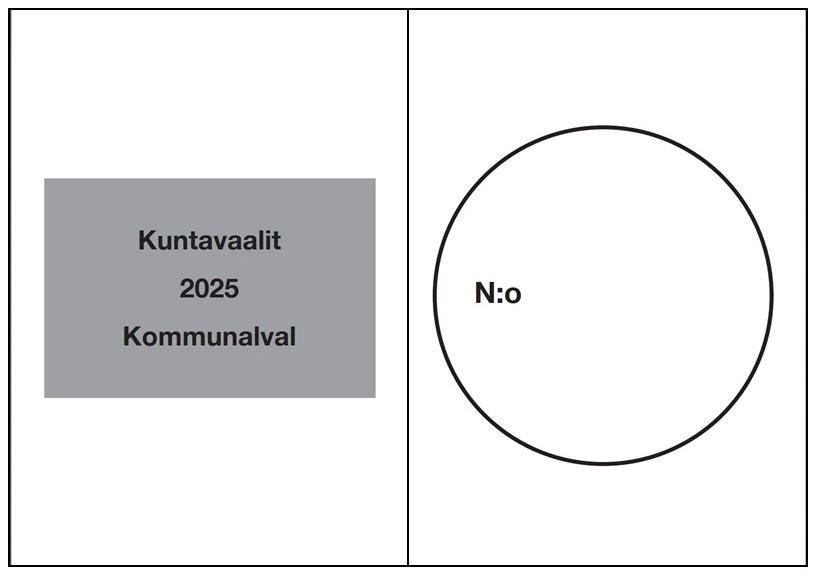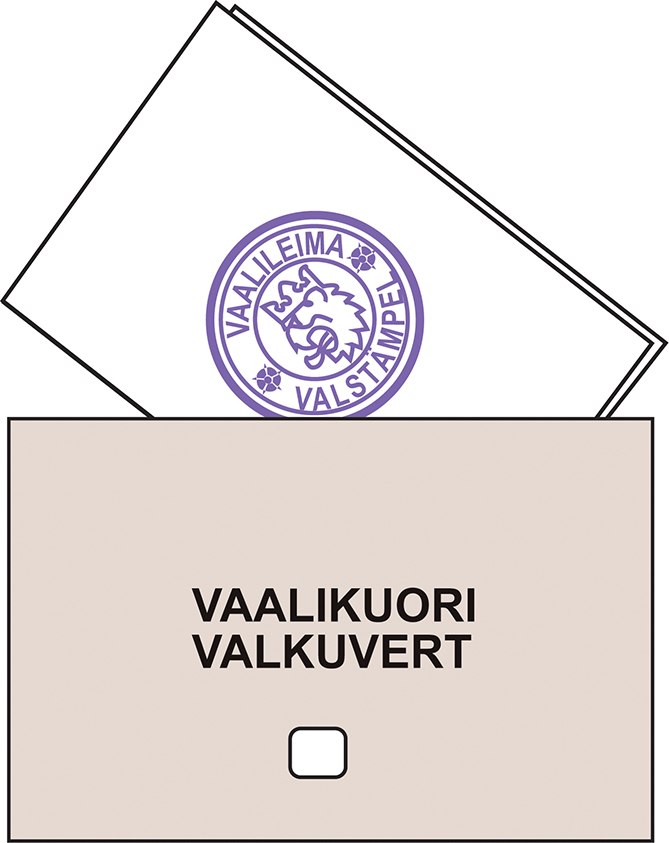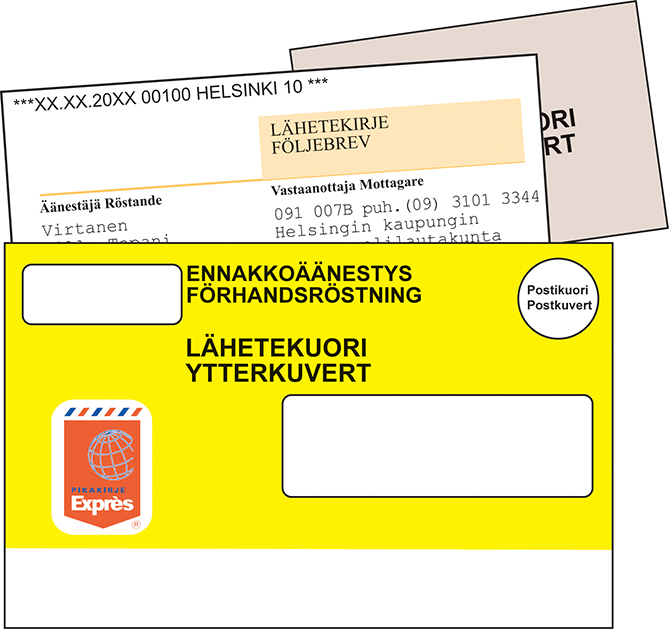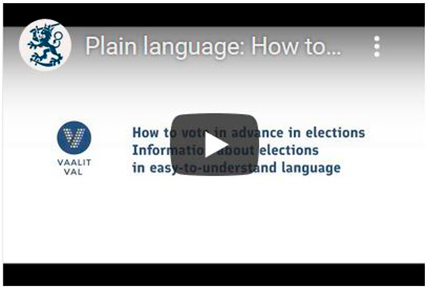Voting in advance
The advance voting begins on Wednesday eleven days before election day and ends abroad on Saturday eight days and in Finland on Tuesday five days before election day.
General advance polling stations where any person entitled to vote may do so are in Finland municipal offices and post-offices determined by municipalities and abroad Finnish embassies prescribed in decree. In every municipality there is at least one such polling station. In Finland special advance polling stations are hospitals, prisons and some other institutions where only the people who receive treatment or are incarcerated there may vote. In addition, people whose ability to move or function is so restricted that they are unable to come to an advance polling station or a polling station on election day may vote in advance at home, i.e. an election commissioner comes to them to receive their vote. The crew of a Finnish ship abroad may vote in advance on board the ship. The advance voting in ships can begin already on the 18th day before election day.
This is how you vote in advance
Before going to the polling station:
1. You must have an identity card issued by the police, a passport, a driving licence or another official photo ID with you when you go to the polling station.
- If you vote in advance in Finland and you do not have such a document, you can apply for a free temporary identity card for voting at the nearest police station. To apply for it, you need two passport photos up to six months old.
- You can also take with you the voting rights notice you received in your home by post (notice of voting rights), but you can also vote without it. If you are voting in advance at an institution or abroad, you may want to include a notice of voting rights as it will speed up voting in these places. If for some reason you have not received the notification, you can inquire about it and / or its information content from the Digital and Demographic Information Agency.
2. If you want to find out your candidate's number in advance, you can find the candidates information in the Ministry of Justice's result service, as well as in the candidates' own election advertisements and in the media, for example.
3. If you are unable to vote on your own, you can bring your own assistant. However, a personal assistant may not be a candidate in the election or his or her spouse, child, sibling or parent. If you do not have your own assistant involved, but need assistance, the election officer will assist you.
At the advance polling station
1. Show your ID to an election official. The election official will give you one purple and one white ballot. Helsinki residents will only get a white ballot.


2. Take the ballots and go to a voting booth (or if you are voting abroad, to the space reserved for voting). If you need help marking the ballot, an election official will assist you in the voting booth. There will be a pen in the booth as well as two master lists of candidates. You can check the number of your candidates in the county and municipal elections on these lists. The master list of candidates for the county elections is purple, and the master list of candidates for the municipal elections is white. Please note that the voting booth will have the master lists of candidates for the county and municipality where the advance polling station is located. Every advance polling station has books of candidates with information on all the candidates in every county and municipality. Advance polling stations located abroad do not have master lists of candidates. Instead, information on candidates is only available in the candidate books.
3. Use the pen to write the number of the candidate you wish to vote for in the county elections on the purple ballot, and the number of the candidate whom you wish to vote for in the municipal elections on the white ballot. Do not write anything else on the ballots.
Instructions for voters on marking the ballot (available in Finnish and Swedish).
4. After marking the numbers on the ballots, fold the ballots in half so that the number is inside the fold and cannot be seen on the outside.
5. Take the folded ballots and go to the election official. The official will stamp both of your ballots.
6. The election official will then give you two brown ballot envelopes. Put each ballot in its own ballot envelope, seal the envelopes with glue and give them to the election official.

7. The election official will record that you have voted in the voting register. The official will print out two cover letters and ask you to sign them. Before signing, make sure that your name is printed on each cover letter. After you sign, the election official will also sign the cover letters.
- If the polling station does not use a voting register, the election official will enter your name on the voter list they maintain and ask you to sign the covering letters that came with your polling card or to fill out separate covering letter forms by hand.
8. The official will put the ballot envelope containing your ballot for the county elections and one of the covering letters you signed in a yellow covering envelope. The official will put the ballot envelope containing your ballot for the municipal elections and the other covering letter you signed in a second yellow covering envelope. Both yellow covering envelopes will be sent to your municipality's central municipal election board.
- When it receives the yellow covering envelope, the central municipal election board will open the envelope and inspect the covering letter to determine whose vote it contains. After the inspection, the covering letter and ballot envelope are separated. Please note that the central municipal election board does not open the ballot envelope at this stage. Ballot envelopes are not opened until election day when the counting of votes begins.

9. Once the election official has put your voting documents in the yellow covering envelopes, you are done voting and can leave the advance polling station.
How to vote in advance in elections video in easy-to-understand English
Easy English: 'How to vote in advance in elections' video at Youtube

